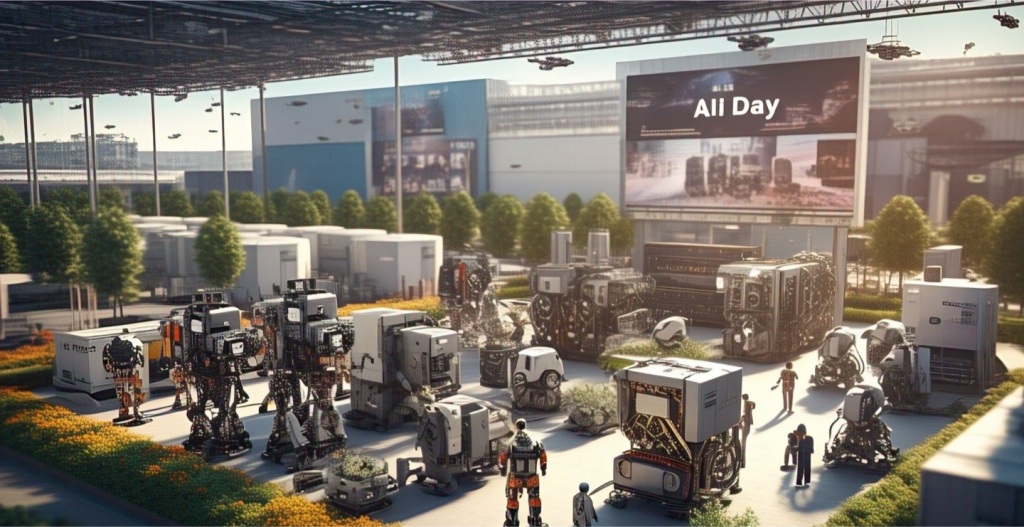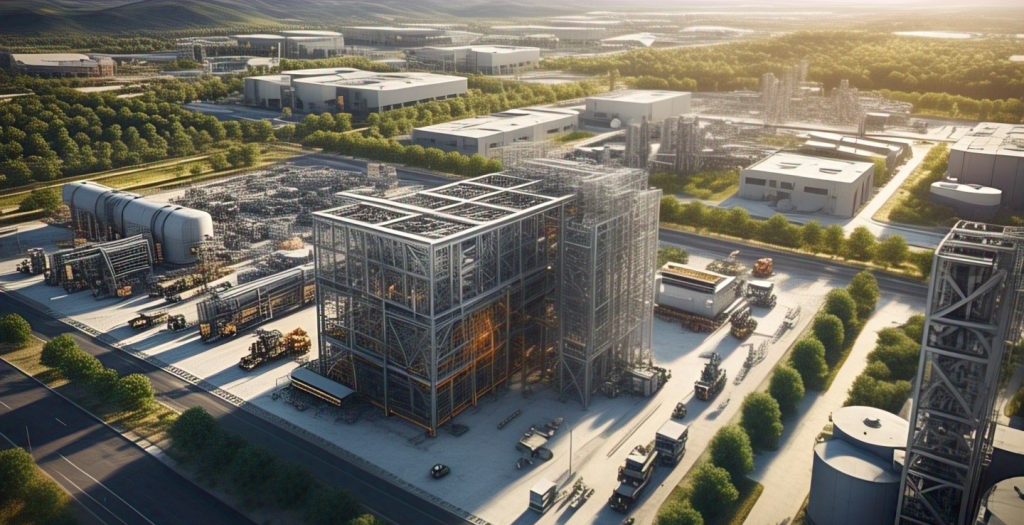
SEZs were built for trade.
AI Zones are built for sovereignty. And in this new global order, sovereignty isn’t about flags — it’s about infrastructure that can think, decide, and scale power on its own.
The industrial park was a product of the 20th century: concrete campuses, customs loopholes, and subsidized labor. But in the 21st century, those assets are liabilities. Static infrastructure can’t serve dynamic trade. Manual workflows can’t process autonomous supply chains.
We’ve crossed the threshold into the post-industrial, AI-first era — where economic zones must operate like living systems: autonomous, intelligent, sovereign.
This isn’t about modernization. This is about mutation.
We’re not here to digitize your park.
We’re here to turn it into a national AI engine.
We’ve entered a new industrial era — one where traditional parks are liabilities. Zones that don’t run on sovereign compute, real-time optimization, and automation-native infrastructure will collapse under their own irrelevance.
This isn’t a critique. It’s a call to power.
We’re not here to modernize your industrial park.
We’re here to weaponize your GDP layer.
Welcome to the Post-Oil Economy
It runs on AI-native zones, carbon-negative infra, and sovereign compute grids.
The old SEZ playbook — tax breaks, land banks, and trade incentives — doesn’t move the needle anymore. In a world defined by autonomous logistics, zero-latency trade, and real-time industrial systems, traditional industrial parks are dead weight.
We’re witnessing the rise of AI Zones: dynamic, self-optimizing, sovereign economic territories built not to enable trade — but to command it.
The Industrial Park Is Dead

Why Legacy SEZs Can’t Serve a Cognitive Economy
Most SEZs still run like 1990s business parks. Spreadsheets, security guards, outdated customs workflows. They’re bottlenecks pretending to be engines.
They can’t support:
- AI-driven factories
- Predictive logistics
- ESG-compliant production
- Zero-carbon, automated infrastructure
- Sovereign digital trade frameworks
In a post-oil economy, your zone’s intelligence layer is your GDP layer. And most industrial zones have none.
What Is an AI Zone?
The Rise of Sovereign, Self-Optimizing Economic Engines
An AI Zone is not a smarter version of an SEZ. It is an entirely new class of economic architecture. Think of it as an operating system that hosts factories, logistics networks, and export pipelines — but unlike traditional zones, it governs, adapts, and scales without manual intervention.
Features include:
- Digital twins of the full industrial environment — not just buildings, but energy flows, workforce dynamics, carbon footprints
- Sovereign cloud compute — embedded within the zone to host real-time decision engines, trade protocols, and IP-secure applications
- Autonomous mobility and logistics mesh — drones, AV fleets, robotic sorting, and AI traffic layers
- ESG-native industrial orchestration — where emissions, waste, and labor compliance are monitored and corrected in real time
- Programmable trade governance — tariffs, customs, and incentives enforced by algorithms, not bureaucrats
These zones don’t require policy memos. They execute policy by design.
The AI Zone is not an innovation zone. It’s a sovereign production superorganism.
Why the GCC Will Lead the AI Zone Era
Vision. Capital. Control.
The GCC is uniquely built to dominate this future:
- Centralized decision-making + long-term masterplans
- Abundant sovereign funds ready to deploy
- A blank-slate mindset willing to leapfrog legacy models
- Projects like NEOM Oxagon, Dubai 2030, Abu Dhabi ADIO already in motion
While the West debates regulations, the Gulf is building the architecture of economic autonomy.
The Zaptech Stack: Intelligence Infrastructure for AI Zones
Zaptech is not a supplier — we are your economic sovereignty engineer. We build AI zones from the compute layer up, engineered for real-time decisioning, autonomous operations, and programmable governance.
Here’s what we bring:
- Sovereign AI Cloud Fabric: Deployable at zone level, enabling instant scalability of AI workloads, digital twin simulations, and regulatory protocols — all within national data sovereignty constraints.
- Predictive Supply Mesh: Logistics intelligence engines that dynamically reroute inventory, prioritize production, and forecast demand across zones, ports, and corridors.
- Digital Twin Command Centers: High-fidelity visualizations of zone performance, enabling CxOs and Ministers to simulate outcomes, enforce compliance, and deploy interventions at the algorithmic level.
- Autonomous Workforce Platforms: AI-powered scheduling, task routing, labor optimization, and robotic process automation that boost productivity without bloating headcount.
- ESG & Carbon Intelligence Layer: Built-in emissions tracking, waste management, and regenerative optimization systems that help zones meet global climate targets — while monetizing carbon credits.
- Regulation-as-Code Engine: Every rule, tariff, and compliance mandate is embedded into smart contracts and executable policy layers — reducing friction, corruption, and administrative lag.
This isn’t an upgrade. It’s an AI-powered GDP weapon system — and Zaptech is your co-architect.
Conclusion
You don’t need to upgrade your SEZ.
You need to outgrow it.
Because in the new economic world order, static zones bleed GDP. And programmable zones print it.
Key Takeaway
If your zone can’t think, route, optimize, and govern in real time — it’s a sunk cost.
Schedule a 1:1 Visioning Session to deploy the full intelligence stack for your next-gen economic corridor.
